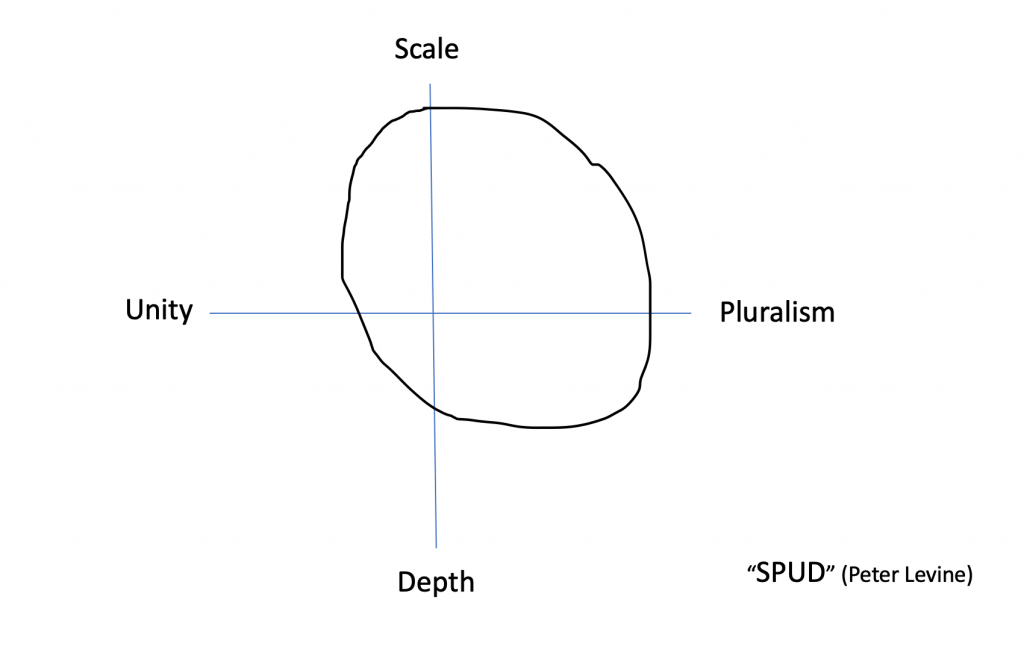Background
Whether you’re building a social movement, organization, network, or media platform, you should strive for SPUD:

Scale: You need a lot of people, at least relative to the size of the community that you are trying to influence. For example, to have an affect on a national election, you may need millions of participants. To influence a college administration, it would help to organize half the student body.
Pluralism: Your organization, movement, or platform must incorporate a plurality of perspectives. The criterion is not whether it represents the opinions of the population as a whole. We are entitled to build groups that tilt one way or another; that is what politics is about. But ideologically homogeneous groups often make poor choices. They also limit their own scale because they forget how many people disagree with their premises. Ideological homogeneity and narrowness are liabilities.
Unity: Groups are more effective when they can present a united front. We march together, sing the same anthem, or use the same hashtag to display unity. Standing together compels respect. Groups also need actual unity so that they can develop agendas and coordinate their resources and actions to accomplish their goals. Compromise is an inevitable aspect of politics, but groups that lack unity can’t negotiate effectively when it comes time to compromise.
Depth: Valuable political organizations change their participants. Truly engaged members learn skills and information, gain agency and purpose, develop allies, and (in the best cases) make their own goals more responsible and ethical by participating in groups. Both political outcomes and the quality of our civic life depend on who develops in these ways.
The SPUD values conflict. Groups with larger scale struggle to provide depth: transformative experiences for their members. But groups that really change lives struggle to reach large scale. Even more obviously, pluralism conflicts with unity. A cheap consensus would reduce pluralism, but deep and continuous disagreements will block unity.
Activity
You can download a PowerPoint version of the SPUD diagram and assess an organization or movement that interests you. Draw a shape to show how well it performs on the four measures of SPUD. For instance, this is how someone might assess a hypothetical movement that has attracted 3 million online participants (lots of scale) who differ and disagree with each other (strong pluralism), but who have not come together to make effective demands (weak unity), and who generally do not learn or change much as a result of engaging (shallow depth).

Reflect on whether the organization or movement should try to improve on any of these measures, and if so, how.
Sources: Levine 2019b, Levine 2022.

